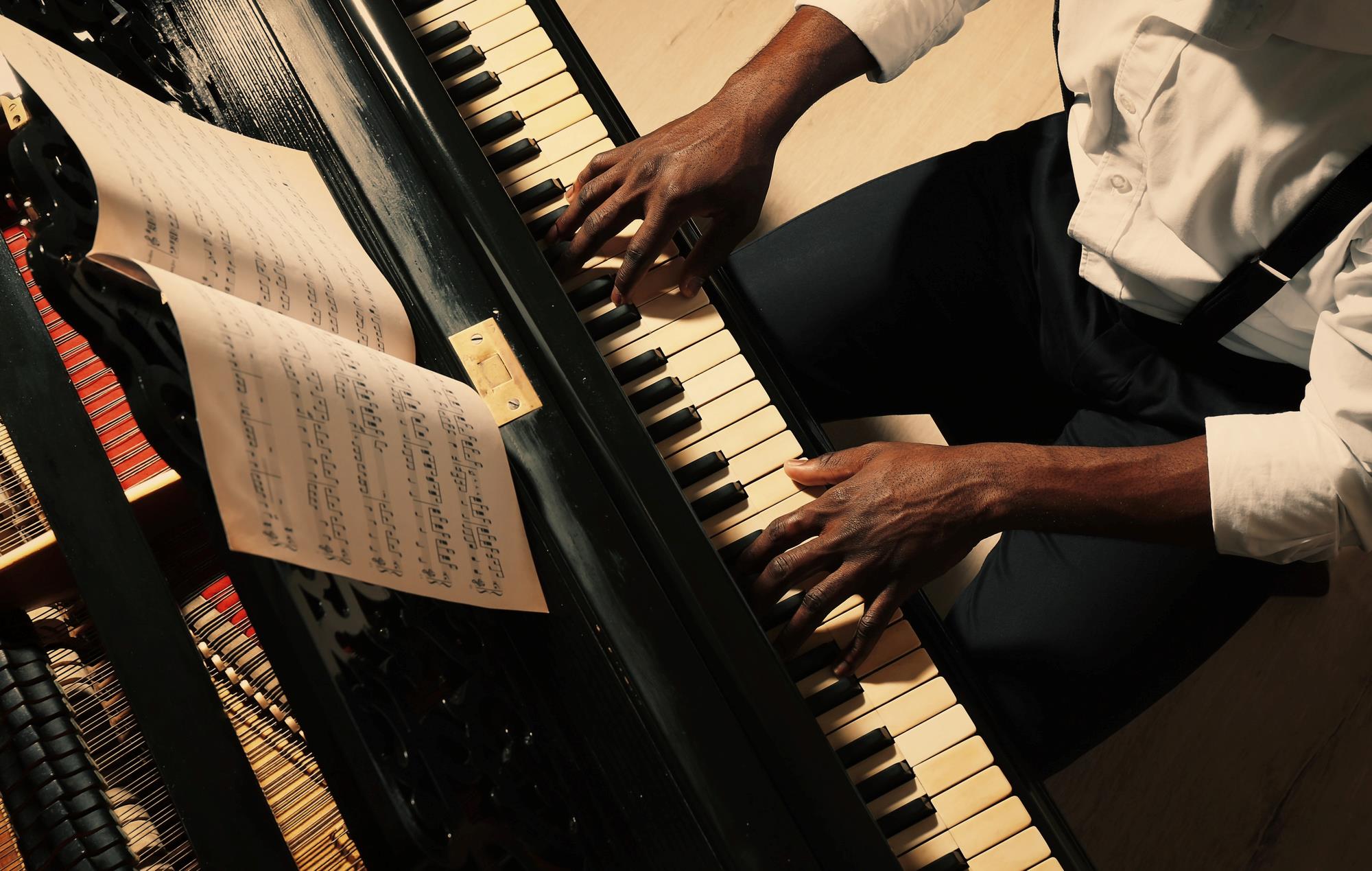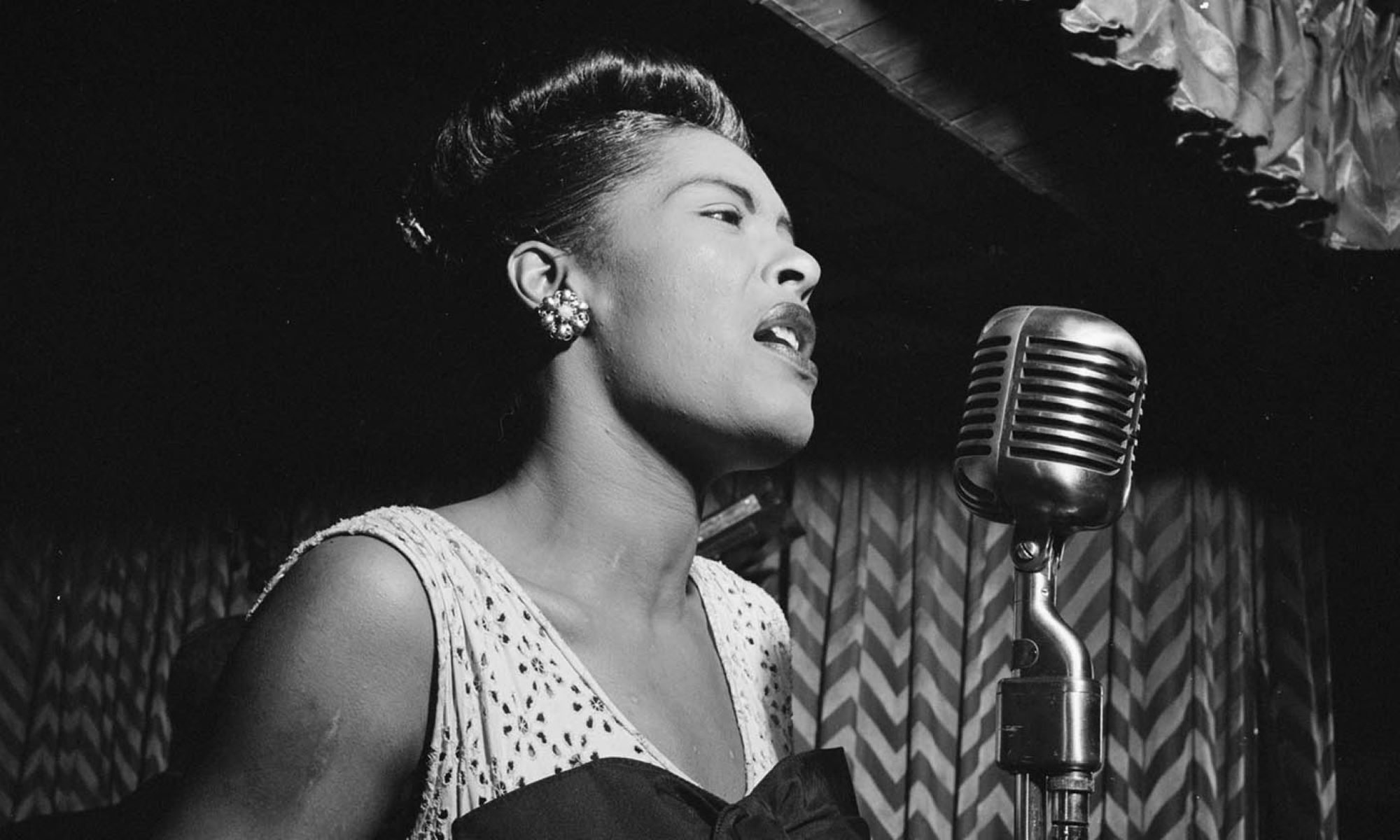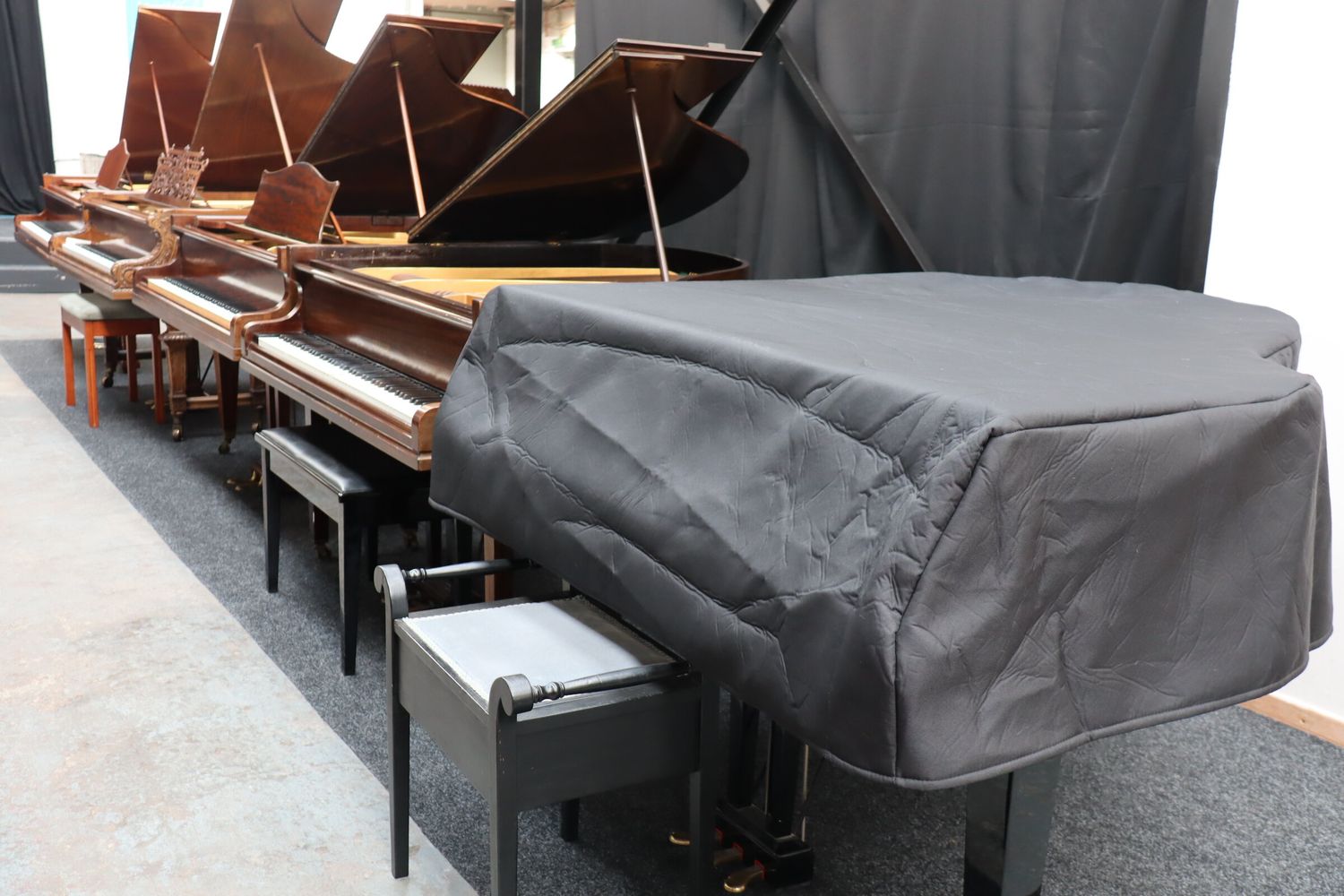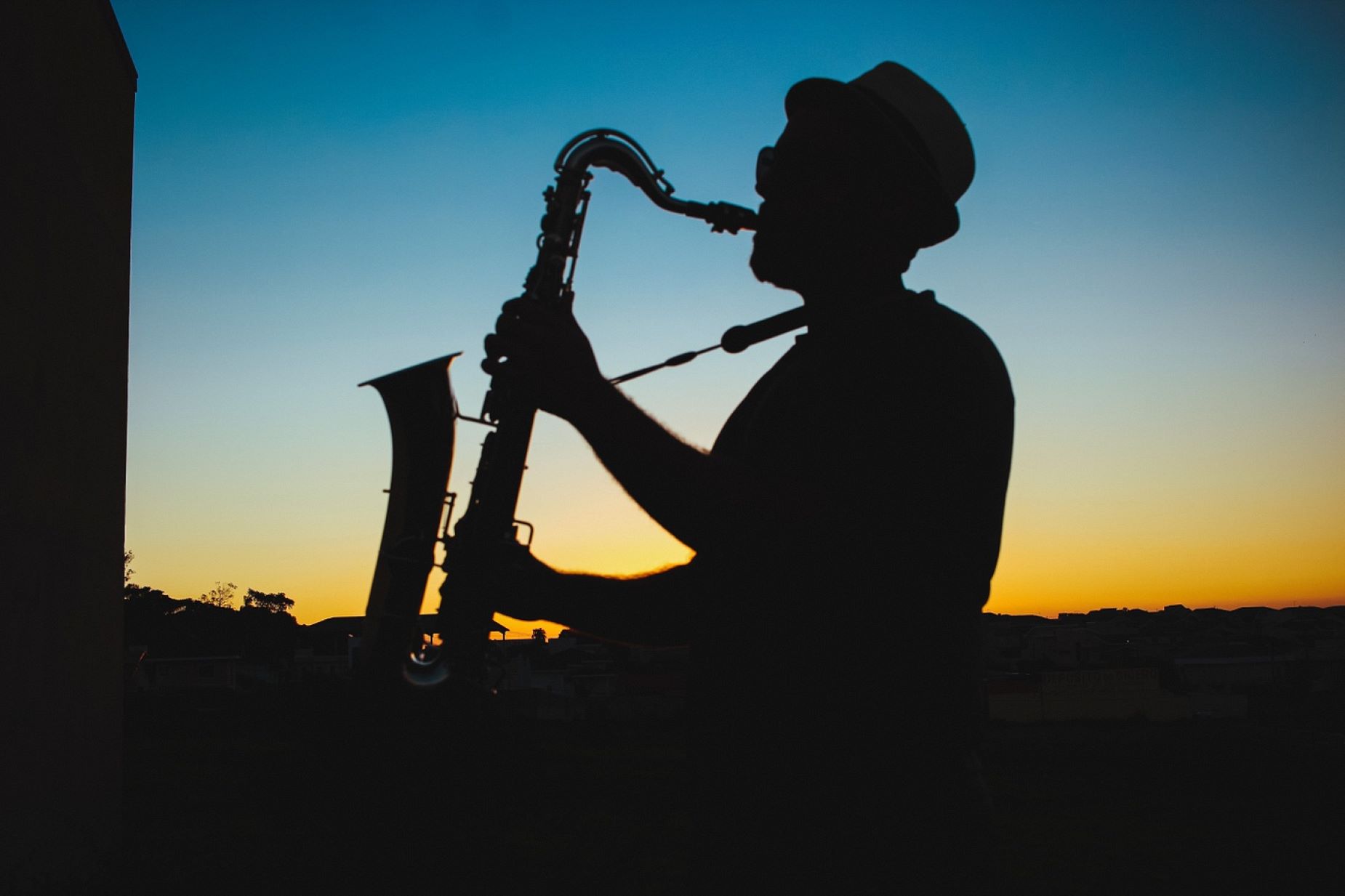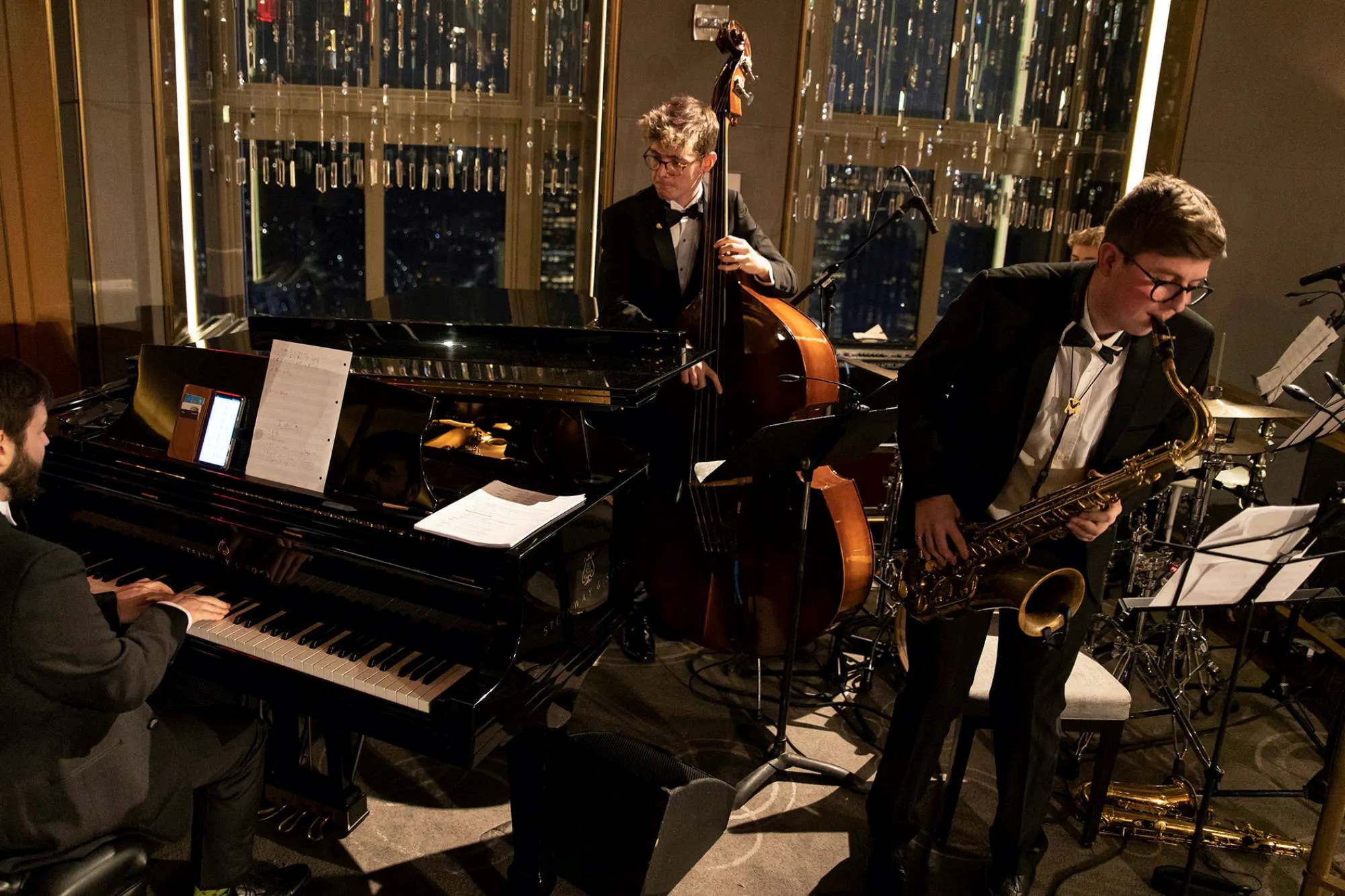Home>Instruments>Piano>How To Improvise On Jazz Piano


Piano
How To Improvise On Jazz Piano
Published: February 10, 2024
Discover how to improvise on jazz piano with our expert tips and techniques. Enhance your piano skills and unlock your creative potential today!
(Many of the links in this article redirect to a specific reviewed product. Your purchase of these products through affiliate links helps to generate commission for AudioLover.com, at no extra cost. Learn more)
Table of Contents
Introduction
Introduction
Welcome to the captivating world of jazz piano improvisation! Whether you're an aspiring jazz pianist or a seasoned player looking to delve deeper into the art of improvisation, this guide is designed to help you unlock the secrets of creating soul-stirring, spontaneous music on the keys.
Jazz piano improvisation is a mesmerizing form of musical expression that allows pianists to explore their creativity, spontaneity, and harmonic knowledge. Unlike classical music, which is predominantly played as written, jazz encourages musicians to interpret and embellish melodies, harmonies, and rhythms, resulting in unique and personalized performances.
In this comprehensive guide, we will embark on an enriching journey through the fundamental aspects of jazz piano improvisation. From understanding jazz harmony and learning essential scales and chords to mastering rhythmic patterns and incorporating advanced improvisation techniques, each section will equip you with the tools and insights needed to elevate your improvisational skills to new heights.
As we navigate through the intricacies of jazz piano improvisation, it's essential to approach this art form with an open mind, a willingness to experiment, and a deep appreciation for the rich history and boundless creativity that define jazz music. So, without further ado, let's embark on this melodic odyssey and unravel the art of improvisation on the jazz piano.
Understanding Jazz Harmony
Understanding Jazz Harmony
At the heart of jazz piano improvisation lies a profound understanding of jazz harmony. Unlike the strict adherence to harmonic progressions in classical music, jazz harmony thrives on the concept of reharmonization, extended chords, and altered extensions, offering a rich tapestry of harmonic possibilities for pianists to explore.
One of the defining features of jazz harmony is its reliance on seventh chords, including major 7th, dominant 7th, minor 7th, and half-diminished 7th chords. These chords form the backbone of jazz progressions, infusing compositions with a sense of sophistication and allure. Additionally, jazz harmony often incorporates extended chords such as 9th, 11th, and 13th chords, adding lush colorations and tensions to the harmonic landscape.
Furthermore, the concept of chord substitution plays a pivotal role in jazz harmony, allowing pianists to interchange chords within a progression while maintaining a cohesive and engaging sound. This practice opens doors to endless harmonic explorations, enabling improvisers to infuse their playing with unexpected yet melodically satisfying chord substitutions.
As you delve into the realm of jazz harmony, it’s imperative to internalize the principles of harmonic function, including the tonic, subdominant, and dominant functions, which underpin the harmonic movement in jazz standards. Understanding the function of each chord within a progression empowers pianists to make informed harmonic choices during improvisation, leading to coherent and compelling musical narratives.
Ultimately, grasping the nuances of jazz harmony is a transformative journey that empowers pianists to navigate the harmonic intricacies of jazz standards with confidence and artistry. It lays the groundwork for melodic invention, allowing improvisers to craft captivating solos that resonate with emotive depth and harmonic ingenuity.
Learning Jazz Scales
Learning Jazz Scales
Embarking on a journey into jazz piano improvisation necessitates a firm grasp of jazz scales, which serve as the melodic foundation for improvisational exploration. While traditional major and minor scales form the bedrock of music theory, jazz scales introduce a palette of captivating tonalities and expressive possibilities.
The major scale, a cornerstone of music theory, assumes a new dimension in jazz improvisation. Pianists delve into the realm of modes derived from the major scale, such as the Dorian, Mixolydian, and Lydian modes, each imbuing melodies with distinct flavors and emotional resonance. These modal extensions infuse jazz improvisation with a sense of harmonic sophistication, enabling pianists to craft melodies that transcend traditional tonal boundaries.
Moreover, the melodic minor scale and its associated modes, including the Lydian Augmented and Altered Scale, contribute to the lush melodic tapestry of jazz improvisation. These scales, characterized by their evocative intervals and unique tonal colors, empower pianists to infuse their improvisations with a sense of intrigue and emotive depth.
Furthermore, the diminished scale and the whole-tone scale emerge as indispensable tools in the jazz pianist’s melodic arsenal. The symmetrical and enigmatic nature of these scales lends a touch of mystique and unpredictability to improvisations, inviting pianists to explore unconventional harmonic pathways and unleash their creative prowess.
As pianists immerse themselves in the realm of jazz scales, it’s essential to internalize these melodic frameworks not merely as technical exercises but as vehicles for emotive expression and storytelling. The nuanced application of jazz scales in improvisation breathes life into melodies, allowing pianists to convey a spectrum of emotions, from exuberance to introspection, through their evocative and harmonically rich improvisations.
Mastering Jazz Chords
Mastering Jazz Chords
In the realm of jazz piano improvisation, mastering a diverse array of chords is paramount to creating compelling harmonic landscapes and enriching melodic tapestries. While traditional triads form the foundation of chordal harmony, jazz piano introduces a wealth of extended and altered chords that bestow improvisations with depth, color, and emotive resonance.
The seventh chord assumes a central role in jazz piano, infusing compositions with a sense of sophistication and harmonic allure. From the velvety smoothness of the major 7th chord to the bluesy edge of the dominant 7th chord and the melancholic allure of the minor 7th chord, these chords serve as the building blocks of jazz harmonic expression, offering a rich palette of tonal colors for pianists to weave into their improvisations.
Furthermore, jazz piano embraces a diverse array of extended chords, including the 9th, 11th, and 13th chords, each adding sumptuous layers of harmonic complexity and emotive depth to compositions. These extended chords introduce tensions and colorations that transcend traditional triadic harmony, bestowing improvisations with a sense of lushness and intrigue.
Moreover, the concept of chord alterations opens doors to boundless harmonic creativity, allowing pianists to infuse their playing with evocative dissonances and unexpected tonal colors. Altered chords, such as the dominant b9, #9, and b13 chords, inject a sense of tension and resolution, lending a touch of unpredictability and emotional intensity to jazz improvisations.
As pianists delve into the realm of jazz chords, it’s imperative to approach these harmonic constructs not merely as static entities but as dynamic tools for emotive expression and storytelling. Mastery of jazz chords empowers pianists to sculpt captivating harmonic narratives, infusing their improvisations with a sense of harmonic richness and melodic allure that resonates deeply with listeners.
Developing Jazz Rhythms
Developing Jazz Rhythms
In the realm of jazz piano improvisation, rhythmic dexterity and inventiveness play a pivotal role in shaping captivating and dynamic performances. Jazz rhythms, characterized by their syncopated phrasing, swing feel, and expressive nuances, infuse improvisations with vitality, energy, and an irresistible sense of groove.
The swing feel, a hallmark of jazz music, imbues performances with a sense of buoyancy and rhythmic elasticity. Pianists adept at cultivating a compelling swing feel infuse their playing with a lighthearted yet propulsive groove, inviting listeners to sway and tap along to the infectious rhythms emanating from the keys.
Moreover, jazz piano embraces the concept of syncopation, wherein offbeat accents and rhythmic surprises inject improvisations with an irresistible sense of forward motion and unpredictability. Pianists adept at skillfully navigating syncopated rhythms weave intricate and compelling patterns that add depth and intrigue to their improvisational journeys.
Furthermore, the art of rhythmic embellishment empowers pianists to infuse their playing with flourishes, trills, and rhythmic variations that elevate their improvisations to new heights of expressiveness and virtuosity. By deftly incorporating rhythmic embellishments, pianists enliven their performances, adding a touch of flair and individuality to their rhythmic tapestries.
As pianists embark on the quest to develop jazz rhythms, it’s essential to internalize the interconnected relationship between harmonic movement and rhythmic expression. The synergy between harmonies and rhythms forms the bedrock of compelling improvisations, enabling pianists to craft performances that are not only harmonically rich but rhythmically engaging and infectious.
Ultimately, the mastery of jazz rhythms empowers pianists to infuse their improvisations with a sense of rhythmic vitality and expressive depth, captivating audiences with performances that brim with infectious energy and irresistible groove.
Incorporating Improvisation Techniques
Incorporating Improvisation Techniques
Imbuing jazz piano improvisation with depth and artistry entails a nuanced understanding and adept application of improvisation techniques that elevate performances from the ordinary to the extraordinary. From melodic development and motivic variation to call and response dynamics, the art of jazz improvisation is a tapestry woven with an array of compelling techniques that enrich and enliven musical narratives.
Melodic development serves as a cornerstone of jazz improvisation, enabling pianists to craft engaging and evocative musical stories through the gradual unfolding and expansion of melodic motifs. By nurturing and evolving melodic ideas, pianists imbue their improvisations with a sense of continuity and thematic richness, inviting listeners on a melodic journey that unfolds with compelling narrative depth.
Furthermore, motivic variation empowers pianists to infuse their improvisations with a sense of intrigue and unpredictability by creatively manipulating and reimagining melodic motifs. Through subtle alterations, rhythmic transformations, and harmonic reinterpretations of motifs, pianists breathe new life into their improvisations, infusing them with a sense of spontaneity and inventive flair.
The dynamic interplay of call and response dynamics adds an interactive and conversational dimension to jazz piano improvisation. By deftly alternating between initiating melodic ideas and responding to them, pianists engage in a musical dialogue that captivates listeners, creating a sense of musical exchange and thematic interplay that enriches the improvisational experience.
Moreover, the art of quotation and allusion allows pianists to interweave familiar melodies, motifs, and harmonic fragments from jazz standards and other musical repertoire into their improvisations, adding layers of depth, nostalgia, and intertextuality to their performances. Quotations and allusions serve as musical signposts, inviting listeners to embark on a sonic journey that pays homage to jazz tradition while embracing the spirit of creative reinterpretation.
As pianists navigate the terrain of improvisation techniques, it’s imperative to approach these tools not as rigid formulas but as versatile and expressive vehicles for musical storytelling. The adept integration of improvisation techniques empowers pianists to craft performances that resonate with emotive depth, thematic richness, and a sense of spontaneous creativity that captivates and inspires audiences.
Putting It All Together: Improvising on Jazz Standards
Putting It All Together: Improvising on Jazz Standards
As pianists journey through the intricate tapestry of jazz piano improvisation, the culmination of their explorations often finds expression in the art of improvising on jazz standards. Jazz standards, timeless compositions revered for their melodic richness and harmonic sophistication, serve as the canvas upon which pianists weave their improvisational narratives, infusing these beloved classics with personal expression and artistic ingenuity.
When approaching the improvisation of jazz standards, pianists draw upon their comprehensive understanding of jazz harmony, scales, chords, and rhythmic nuances to breathe new life into these timeless compositions. The harmonic foundation provided by jazz standards becomes a playground for harmonic exploration, reharmonization, and expressive reinterpretation, allowing pianists to craft performances that honor tradition while embracing innovation.
Furthermore, the melodic contours of jazz standards serve as fertile ground for melodic invention and thematic development. Pianists adept at improvising on jazz standards infuse these melodies with personal expression, emotive phrasing, and melodic variations that unfold with a sense of narrative depth and emotive resonance, inviting listeners into a world of captivating musical storytelling.
The rhythmic tapestry of jazz standards provides a canvas for rhythmic creativity and dynamic expression. Pianists skillfully navigate the swing feel, syncopated phrasing, and rhythmic embellishments, infusing their improvisations with an infectious sense of groove and rhythmic vitality that animates these timeless compositions with contemporary energy and vibrancy.
Moreover, the art of thematic exploration allows pianists to delve into the thematic motifs and harmonic nuances of jazz standards, engaging in melodic dialogues and motivic variations that imbue their improvisations with a sense of thematic continuity and expressive depth. By skillfully exploring and developing thematic material, pianists craft performances that resonate with cohesive musical narratives and emotive resonance.
Ultimately, the art of improvising on jazz standards represents a harmonious convergence of technical prowess, harmonic fluency, melodic expressiveness, and rhythmic vitality. Pianists harness the wealth of knowledge and creative insight garnered through their exploration of jazz harmony, scales, chords, rhythms, and improvisation techniques to breathe new life into these timeless compositions, crafting performances that honor tradition while embracing the spirit of boundless creativity and artistic innovation.
Conclusion
Conclusion
As we draw the curtains on this melodic odyssey through the realm of jazz piano improvisation, it’s evident that the art of spontaneous musical creation is a captivating and enriching endeavor that transcends technical proficiency and theoretical knowledge. Jazz piano improvisation, with its emphasis on creativity, harmonic exploration, and rhythmic vitality, embodies a profound musical journey that invites pianists to unleash their artistic ingenuity and emotive depth.
From delving into the intricacies of jazz harmony and mastering an array of captivating scales and chords to cultivating compelling rhythms and incorporating dynamic improvisation techniques, pianists are equipped with a diverse toolkit that empowers them to craft performances brimming with expressive depth, thematic richness, and harmonic allure.
As pianists navigate the terrain of jazz standards, infusing these timeless compositions with personal expression and artistic innovation, they embody the spirit of jazz as a living, breathing art form that thrives on individuality, creativity, and spontaneous musical storytelling.
The journey of jazz piano improvisation is a testament to the enduring allure of jazz music, a genre that celebrates the spirit of innovation, improvisation, and collaborative musical dialogue. It beckons pianists to embark on a continuous quest for artistic growth and expressive depth, inviting them to explore the boundless possibilities of musical creation and connect with audiences on a profound emotional level.
Ultimately, jazz piano improvisation transcends the realm of technical proficiency, inviting pianists to infuse their performances with a sense of personal narrative, emotional resonance, and creative ingenuity. It celebrates the individuality and artistic voice of each pianist, fostering a musical landscape where spontaneity, innovation, and harmonic exploration converge to create performances that resonate deeply with audiences and stand as timeless testaments to the enduring power of musical creativity.

